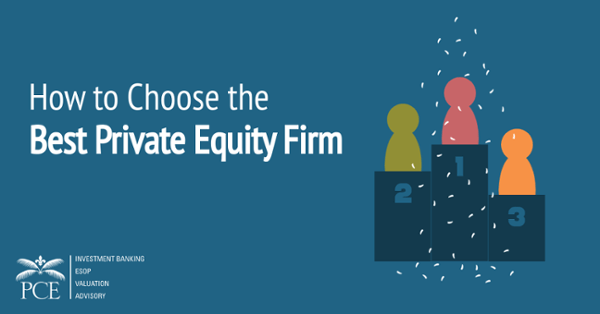4 Things Private Equity Firms Look For Before Acquisition
/dotdash_Final_Private_Equity_Apr_2020-01-3ce99c81ce344ddc94fe05b17a2b7716.jpg)
What you do not want is the use of excessive quantities of financial obligation, which is actually what puts business at high risk for insolvency. My number two, I guess I’m torn in between more transparency so that we understand more about what these private equity funds are doing, and an ensured severance for workers.
What often takes place is private equity comes in and loads a portfolio company up with debt. In some way the portfolio business now needs to get the cashflow up so that it can now make the financial obligation payments. And the most convenient way to do that is to cut employee hours, employment, or benefits. Please note: Although this chart may suggest otherwise, IPOs are not the peak of all (and even most) businesses. Lots of businesses will begin, grow, and pass away with private capital. Not all private equity is equivalent. There are countless private equity firms in the US ranging in size. CapIQ, the finance industry’s top database for market intelligence, reports 2666 private equity firms in the United States.
The chart below screens the information. The chart reveals the wide array of private equity firms across the nation. There are 279 companies with funds over $1B, 346 firms with funds less than $50M, and 1171 in between. At the leading end, there are the market giants of KKR, Blackstone, Carlyle, and so on. obtained $ million.

These are the deals you read about in the newspaper. Although they are a minority of private equity deals, they receive most of journalism. At the lower end, there are private equity companies that invest $1-2 million in privately-held businesses. Your preferred coffee roaster or the regional factory could be private equity-controlled.
Private Equity Faqs – American Investment Council
Lots of firms will just consider companies that operate in a particular sector or geographical area. What’s the difference in between private equity-owned and private equity-controlled? A private equity firm is rarely the sole owner of a business however is generally the bulk owner. Private equity firms typically control 60-80% of a company.

Although these services are often referred to as “private equity-owned” they might more properly be thought of as “private equity-controlled.” Private equity firms raise funds of capital that buy companies. The capital in the funds come from Limited Partners (LPs) and General Partners (GP). About 90% of a fund’s capital comes from LPs.
Examples of LPs are insurance coverage business, trusts and endowments, pension funds, high net worth individuals, and banks. They are not involved in the fund everyday. It is just an investment car for their capital (counts securities fraud). GPs are individuals who run the fund as their day job. Many GPs have histories as bankers, accountants, or portfolio supervisors.
The capital in the fund is used to buy business. When those business are sold the profit is distributed in between the LPs and GPs. LPs usually receive 80% of the preferred return (if any). GPs get around 20% of the capital gains (if any). They also earn a management cost on the fund’s capital 2% is basic.
How To Answer “Why Private Equity” For Interviews – 10x Ebitda

They examine a a great deal of offers but a very small percentage gets closed. Many private equity companies have multiple funds of capital. Each fund follows a timeline comparable to this: The very first couple years is invested raising the capital that will develop the fund. As fundraising concludes, GPs deal with their offer sources to find business they are interested in purchasing.
When the GP sees that an exit can produce a rate of return that would satisfy or go beyond the LPs expectations, they will offer business. Many funds have a 10-year life process. Although, that has actually been changing over the last few years with some funds picking life process more detailed to 15 or twenty years.
:max_bytes(150000):strip_icc()/dotdash_Final_Private_Equity_Apr_2020-01-3ce99c81ce344ddc94fe05b17a2b7716.jpg)
These funds work on various timelines. partner indicted counts. A private equity firm can be raising money for one fund while exiting a service to make a return on a various fund as can be seen in the chart below. Simply as each fund has a basic life cycle, private equity companies follow a basic cycle for each company they purchase.

Particular funds can have their own timelines, financial investment objectives, and management approaches that separate them from other funds held within the same, overarching management firm. Effective private equity companies will raise numerous funds over their life time, and as companies grow in size and intricacy, their funds can grow in frequency, scale and even specificity. To find out more about real estate investing and - go to the videos and -.
Prior to founding Freedom Factory, Tyler Tysdal managed a development equity fund in association with several celebs in sports and home entertainment. Portfolio business Leesa.com grew rapidly to over $100 million in revenues and has a visionary social mission to “end bedlessness” by donating one bed mattress for every ten sold, with over 35,000 contributions now made. Some other portfolio companies were in the markets of white wine importing, specialty loaning and software-as-services digital signs. In parallel to managing properties for organisations, Tyler was handling private equity in real estate. He has had a number of successful personal equity investments and numerous exits in trainee real estate, multi-unit housing, and hotels in Manhattan and Seattle.
When the business has actually grown to a point where the fund will make a satisfying rate of return on the sale, the firm will sell their stake in the organisation. harvard business school. What is a” Buy & Hold” strategy?Some private equity companies will state that they have a “purchase & hold” technique. This implies that the firms do not buy businesses with a specific exit timeline in mind they will own business for an undetermined quantity of time.
How Private Equity Firms Are Structured – By Mike Bacior
There are five boxes that should be inspected for every financial investment a private equity firm makes. With very few exceptions, a service needs to have these things for a private equity firm to be interested: Self-Sufficient Management Group Minimum $3M EBITDA Favorable Capital Defensible Market Position Viable Exit Technique Remember private equity firms are merely money managers.
Private equity companies might think about smaller sized companies as add-on’s. What’s the distinction in between platform and add-on acquisitions? Platform acquisitions are typically financial investments in large business poised for development. Platform companies are frequently the first significant financial investment for a private equity fund. Add-on acquisitions are investments made after a platform is developed – tysdal lone tree.
In our deal with private equity companies we have seen that an appealing incentive in getting a deal done is seller participation in the capital structure of the business moving forward. This typically takes the form of seller funding and/or roll-over equity. Private equity companies discover these options attractive because they enable the seller’s competence to still be included in the organisation’ operations.
This chart shows a standard private equity deal structure: A lot of business buyers, private equity funds particularly, utilize financial obligation even if they don’t need to. Here’s why: debt increases the fund’s rate of return. Since of that, debt is much more prominent to private equity deals than many people realize. This chart lays out a simple situation as an example (grant carter obtained).
Private Equity Marketing: The Complete Guide – Mediaboom
Each year after the acquisition, the debt part of the firm’s ownership decreases and the equity portion increases. In this circumstance the company’s valuation has remained constant at $4,000 (although, business normally do grow after 5 years). That indicates that the firm will get $4,000 on the sale of the business.

This is due to the fact that they chose to utilize debt when they made the acquisition – securities fraud racketeering. As time went on, debt decreased, and equity grew. Without financial obligation, the firm would not have had such a strong rate of return. Even if you believe private equity will never ever touch the ownership of your company, it matters because You’re in competitors with private equity-controlled services.
Read More